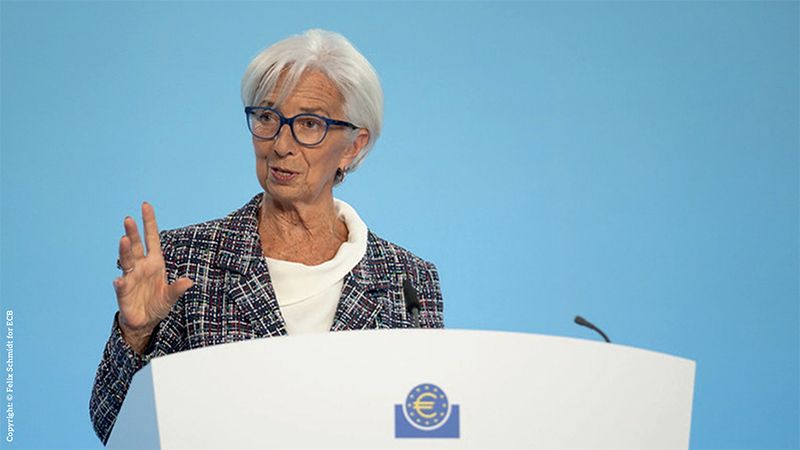This article was originally published by our sister title, Portfolio Adviser
The European Central Bank (ECB) is likely to next cut interest rates in September this year, following “sticky” services inflation and concerns about wage increases, according to economists and CIOs.
This afternoon (18 July), the ECB decided to hold interest rates at 3.75%, having lowered them by 25 basis points in June for the first time since 2019.
Markets were assigning a 92% probability of the ECB holding rates prior to today’s meeting, according to Capital.com, while two rate cuts during the rest of the year have largely been priced in by markets. During June’s meeting, ECB president Christine Lagarde said there is no pre-determined interest rate path for the bloc, and that it would remain data dependent month-on-month.
See also: French election: ‘Worst-case scenario’ avoided, but fresh uncertainty looms
Daniele Antonucci, chief investment officer at Quintet Private Bank, said today’s decision “isn’t a surprise”, given it was also “widely pre-announced by the central bankers”.
“The recent data trend suggests that the inflation progress is just slowing. One of our 2024 outlook views was that inflation would slow to around central banks’ targets. This is what’s happening in the eurozone,” he said.
“While we do expect the ECB to continue to say that it’s data-dependent, we think normalising inflation is likely to prompt the central bank to cut again in September.
“Any further ECB rate cut is likely to be a tailwind for consumption and investment and, therefore, economic growth.”
Daniela Sabin Hathorn, senior market analyst at Capital.com, pointed out that while headline inflation softened in June, services inflation “remains sticky”.
She said: “Given the bank is in no rush to cut rates given the resilience in economic growth, markets expect rate cuts to happen gradually. For now, markets are assigning a 64% chance of another 25 basis-point cut at the next ECB meeting on 12 September.”
The press release that was distributed after the decision was made stated that “domestic price pressures are still high, services inflation is elevated and headline inflation is likely to remain above the target well into next year”, which Hathorn argued “could be construed as slightly hawkish”.
“That said, some pushback from central banks is expected as they don’t want markets to get too ahead of themselves with pricing in rate cuts. For now, two more rate cuts are almost fully priced in for the remainder of 2024.”
See also: How have recent European elections impacted energy?
Stefan Gerlach, chief economist at EFG Bank in Zurich and former deputy governor of the Central Bank of Ireland, said the ECB is now “finding a balance between sticky inflation and concerns about wage increases”, which could work against the prospect for future cuts, while a worsening economic outlook could present a further case for lowering rates.
“Political uncertainty in France is also not helpful,” he continued. “When policy is obviously wrong, rates will be changed often and in large steps. But when policy is finely balanced, as it is now, changes will be small and occasional.”
He added: “A weaker economy will slow inflation, setting the stage for lower rates. In central banking, there is safety in numbers. With the Fed likely to cut rates in September, the Governing Council will do so too. I expect another cut in December or January.”







